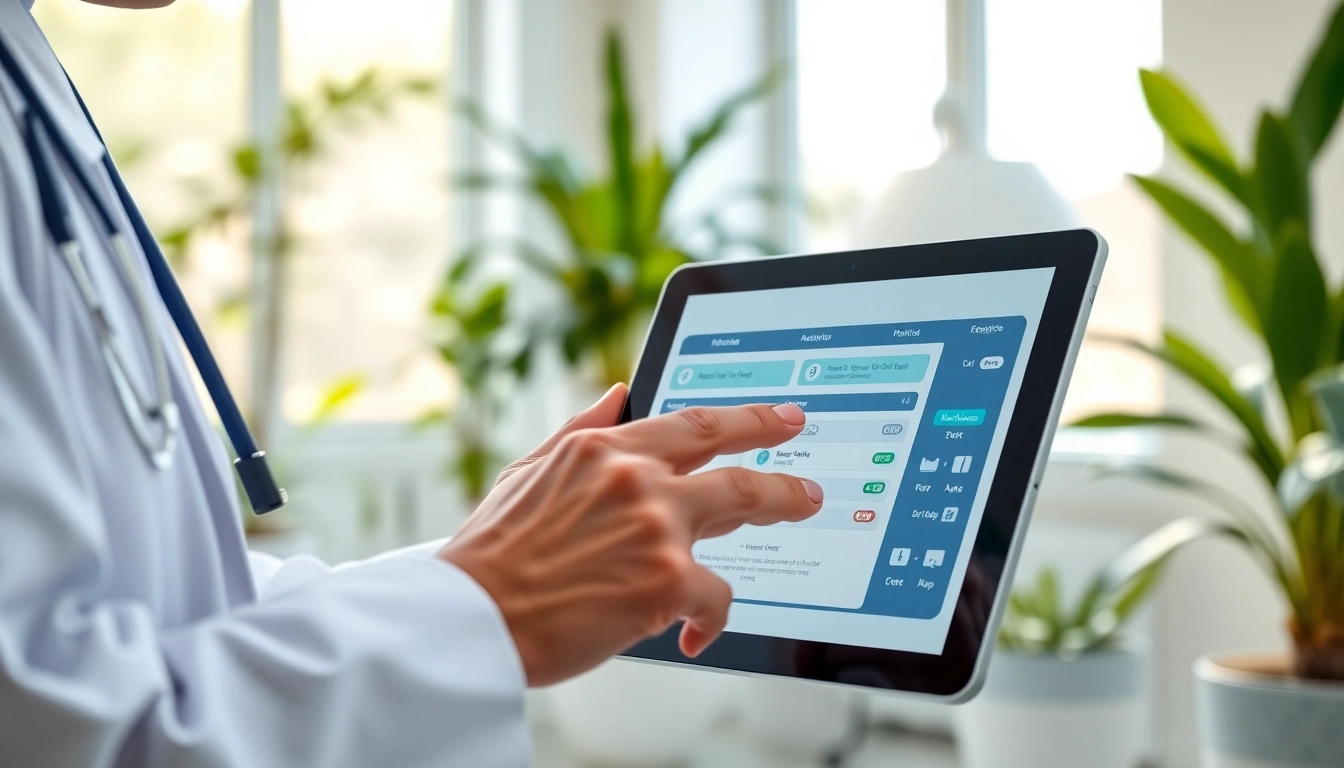A Comprehensive Overview of Mobile Eprescription
As the healthcare landscape continues to evolve, the introduction and integration of technology have become increasingly vital. Mobile eprescription is one such innovation reshaping how prescriptions are managed and delivered. This system allows healthcare providers to send prescriptions directly to pharmacies via mobile devices, eliminating the need for paper prescriptions and reducing errors. In this article, we will explore the numerous benefits of mobile eprescription for both healthcare providers and patients, outline best practices for implementation, and discuss metrics for measuring the success of these systems.
What is Mobile Eprescription?
Mobile eprescription, or electronic prescribing through mobile devices, is a technology-driven process that allows healthcare providers to create, send, and manage patient prescriptions digitally. It streamlines the prescription process, offering providers real-time access to a patient’s medication history, allergy information, and potential drug interactions, all of which contribute to safer prescribing practices. This system replaces traditional paper prescriptions and significantly enhances communication between providers and pharmacies.
The Importance of Mobile Eprescription in Today’s Healthcare
The need for effective and secure communication methods in healthcare has intensified in recent years. With rising patient volumes and the complexity of healthcare management, mobile eprescription has emerged as a crucial tool. It allows for a more seamless exchange of information, reducing wait times for patients and minimizing the administrative burden on healthcare providers. Consequently, mobile eprescription contributes to improving overall patient care and efficiency within the healthcare system.
Key Features of Mobile Eprescription Solutions
Mobile eprescription solutions come equipped with several key features that not only enhance their functionality but also increase their usability for both providers and patients. These features often include:
- Real-Time Updates: Providers can access real-time information about a patient’s medication history and allergies, allowing for more informed prescribing decisions.
- Secure Communication: Mobile eprescription ensures secure transmission of prescription data between provider and pharmacy, protecting patient information.
- Integration with Electronic Health Records (EHR): These solutions often integrate seamlessly with existing EHR systems, enabling a more streamlined workflow.
- User-Friendly Interfaces: Many mobile eprescription solutions feature intuitive interfaces that simplify the prescribing process, reducing the likelihood of errors.
- Patient Notifications: Patients may receive automatic notifications regarding their prescriptions, including refill reminders and alerts for potential drug interactions.
Benefits of Mobile Eprescription for Healthcare Providers
Improved Workflow Efficiency
One of the primary benefits of mobile eprescription is the significant improvement in workflow efficiency. Providers can write prescriptions on-the-go, reducing the time required to complete administrative tasks. Moreover, prescriptions can be sent directly to a pharmacy, eliminating the need for patients to drop off physical copies. This not only speeds up the process but also allows providers to focus more on patient care rather than paperwork.
Reduced Medication Errors
Medication errors are a major concern in healthcare, often leading to adverse drug reactions and increased healthcare costs. Mobile eprescription systems significantly reduce these errors by allowing providers to access up-to-date patient information, thereby avoiding potential mismatches in drug prescriptions. The system also minimizes misunderstandings related to handwritten prescriptions, ensuring that pharmacists receive accurate and legible instructions.
Enhanced Patient Engagement
Mobile eprescription fosters enhanced patient engagement through improved communication and accessibility. With direct notifications regarding their prescriptions, patients remain informed about their medications and any necessary follow-ups. The ability to manage prescriptions efficiently encourages patients to become active participants in their healthcare, which can significantly impact their health outcomes positively.
Benefits of Mobile Eprescription for Patients
Convenience and Accessibility
For patients, mobile eprescription offers unparalleled convenience. With just a few taps on a mobile device, they can receive prescriptions without the need for in-person visits to their healthcare provider for every medication. This accessibility is especially beneficial for patients with mobility challenges or those living in remote areas. Additionally, they can manage their prescriptions from anywhere, facilitating timely and consistent medication intake.
Faster Prescription Refills
Mobile eprescription streamlines the refill process for patients, allowing for quicker access to required medications. Patients can request refills through their mobile device, which sends an alert to their healthcare providers for approval. This rapid turnaround helps patients maintain consistent medication regimens, ultimately leading to better health outcomes.
Better Medication Adherence
Adherence to medication regimens is a critical factor in ensuring effective treatment outcomes. Mobile eprescription solutions can incorporate features such as reminders and alerts, helping patients remember when to take their medications and which doses to take. Enhanced adherence can significantly reduce hospital visits and complications associated with missed medications.
Implementing Mobile Eprescription: Best Practices
Choosing the Right Technology Partner
The selection of a reliable technology partner for mobile eprescription is fundamental to successful implementation. Healthcare providers must evaluate various vendors based on features, interoperability with existing systems, and regulatory compliance. Securing a partner with robust support and training resources can ease the transition to mobile eprescription and enhance user satisfaction.
Training Staff for Effective Usage
Proper training is essential to ensure that all healthcare staff can effectively utilize mobile eprescription solutions. Educational sessions should focus on the functionalities of the system, emphasizing the importance of patient data security and compliance with regulatory standards. Regular refreshers and updates can help maintain proficiency among staff members.
Integrating into Existing Healthcare Systems
Seamless integration with existing healthcare systems is crucial for maximizing the advantages of mobile eprescription. Organizations should work closely with technology partners to ensure that the new systems communicate effectively with their electronic health records and other relevant platforms. This integration will help streamline workflows and eliminate duplication of efforts.
Measuring the Success of Mobile Eprescription
Performance Metrics to Track
To assess the effectiveness of mobile eprescription, organizations should establish clear performance metrics. Key performance indicators (KPIs) might include prescription error rates, patient wait times for medication, and the percentage of prescriptions filled on the first request. Monitoring these metrics allows providers to identify areas for improvement and optimize their services continuously.
Patient Feedback and Satisfaction
Gathering feedback from patients regarding their experiences with mobile eprescription is crucial for understanding its impact on healthcare delivery. Organizations can implement surveys or use feedback tools to gauge patient satisfaction, preferences, and suggestions for enhancements. Understanding the patient perspective helps refine mobile eprescription processes and fosters a patient-centered approach to healthcare.
Long-Term Benefits for Healthcare Providers
In addition to immediate improvements in efficiency and patient engagement, mobile eprescription offers long-term benefits for healthcare providers. As prescriptions are managed more effectively, organizations can expect reductions in operational costs associated with medication errors and administrative inefficiencies. Over time, strengthened patient relationships and improved health outcomes can enhance a provider’s reputation and contribute to increased patient retention.



